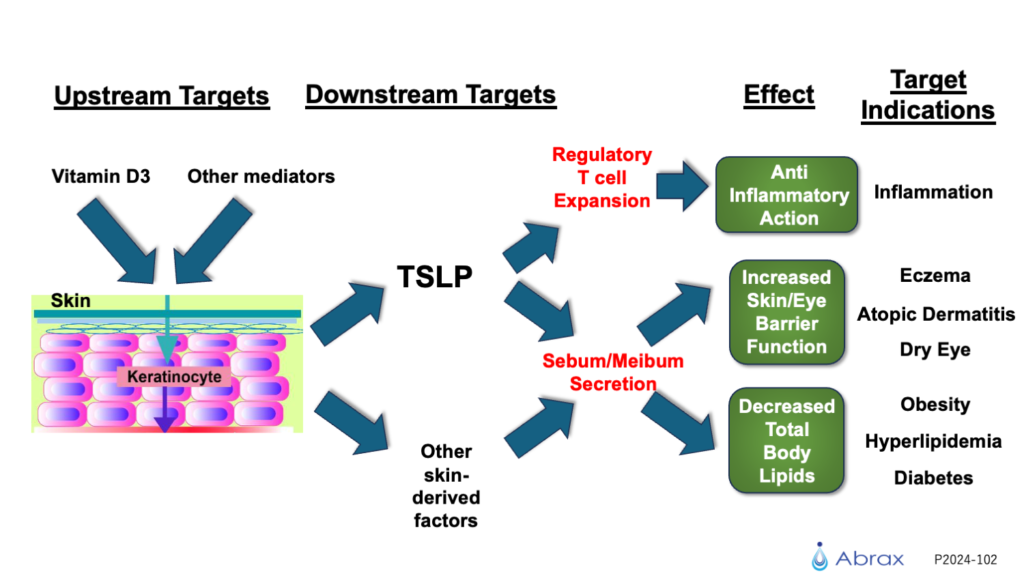Harnessing the potential of the skin to heal the body

To induce sebum secretion from the skin, both upstream and downstream pathways can be targeted.
The stimulation of skin keratinocytes by drugs such as Vitamin D3 can induce skin-derived factors (TSLP and others), which stimulate sebum secretion. Alternatively, the downstream pathways (TSLP and other skin-derived factors) can be directly administered to induce sebum secretion.
Meibum, a substance produced by inner eyelids, is also induced a similar manner. Some of these skin-derived hormones (*1) can also enhance the expansion of an immunosuppressive subset of T cells known as regulatory T cells.
Together, these effects can translate into novel therapeutic strategies to treat inflammatory diseases, skin-related disorders, dry eye, and lipid metabolic disorders.
*1:



